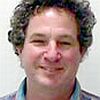    
Yun S. Song,
Zhihong Ding,
Dan Gusfield,
Charles Langley and
Yufeng Wu. Algorithms to Distinguish the Role of Gene-Conversion from Single-Crossover Recombination in the Derivation of SNP Sequences in Populations. In JCB, Vol. 14(10):1273-1286, 2007.
Keywords: ARG, from sequences, phylogenetic network, phylogeny, Program SHRUB, reconstruction.
Note: http://dx.doi.org/10.1089/cmb.2007.0096.
Toggle abstract
"Meiotic recombination is a fundamental biological event and one of the principal evolutionary forces responsible for shaping genetic variation within species. In addition to its fundamental role, recombination is central to several critical applied problems. The most important example is "association mapping" in populations, which is widely hoped to help find genes that influence genetic diseases (Carlson et al., 2004; Clark, 2003). Hence, a great deal of recent attention has focused on problems of inferring the historical derivation of sequences in populations when both mutations and recombinations have occurred. In the algorithms literature, most of that recent work has been directed to single-crossover recombination. However, gene-conversion is an important, and more common, form of (two-crossover) recombination which has been much less investigated in the algorithms literature. In this paper, we explicitly incorporate gene-conversion into discrete methods to study historical recombination. We are concerned with algorithms for identifying and locating the extent of historical crossing-over and gene-conversion (along with single-nucleotide mutation), and problems of constructing full putative histories of those events. The novel technical issues concern the incorporation of gene-conversion into recently developed discrete methods (Myers and Griffiths, 2003; Song et al., 2005) that compute lower and upper-bound information on the amount of needed recombination without gene-conversion. We first examine the most natural extension of the lower bound methods from Myers and Griffiths (2003), showing that the extension can be computed efficiently, but that this extension can only yield weak lower bounds. We then develop additional ideas that lead to higher lower bounds, and show how to solve, via integer-linear programming, a more biologically realistic version of the lower bound problem. We also show how to compute effective upper bounds on the number of needed single-crossovers and gene-conversions, along with explicit networks showing a putative history of mutations, single-crossovers and gene-conversions. Both lower and upper bound methods can handle data with missing entries, and the upper bound method can be used to infer missing entries with high accuracy. We validate the significance of these methods by showing that they can be effectively used to distinguish simulation-derived sequences generated without gene-conversion from sequences that were generated with gene-conversion. We apply the methods to recently studied sequences of Arabidopsis thaliana, identifying many more regions in the sequences than were previously identified (Plagnol et al., 2006), where gene-conversion may have played a significant role. Demonstration software is available at www.csif.cs.ucdavis.edu/∼gusfield. © 2007 Mary Ann Liebert, Inc."
@Article{SDGLW2007,
AUTHOR = {Song, Yun S. and Ding, Zhihong and Gusfield, Dan and Langley, Charles and Wu, Yufeng},
TITLE = {Algorithms to Distinguish the Role of Gene-Conversion from Single-Crossover Recombination in the Derivation of SNP Sequences in Populations},
YEAR = {2007},
JOURNAL = {JCB},
VOLUME = {14},
NUMBER = {10},
PAGES = {1273-1286},
URL = {http://dx.doi.org/10.1089/cmb.2007.0096},
NOTE = { http://dx.doi.org/10.1089/cmb.2007.0096},
ANNOTE = {BIBUPDATE : 20071212},
KEYWORDS = {ARG, from sequences, phylogenetic network, phylogeny, Program SHRUB, reconstruction} } |